Resilience Viewed through the Lens of Climate Change and Water Management
Abstract
1. Introduction
2. Resilience Concepts and Attributes
3. Resilience Thinking from Global to Local Scales
4. Indices for Monitoring and Modelling Catchment Resilience
5. Properties that Contribute to Catchment Resilience
6. Applying Catchment Resilience Concepts in Practice
7. Concluding Remarks and Recommendations
- Use resilience terminology precisely and consistently. Within scientific and policy documents, “resilient” is at times used interchangeably with “sensitive”, “resistant”, “sustainable” or, as the opposite to “vulnerable”. A standard glossary of terms could be established by the community.
- Strive to build back better or safer after a catastrophe. Reconstruction and recovery activities create opportunities to build resilience (i.e., to adaptively manage emergent risks). Sometimes it may be necessary to accept the new reality of a change of state—for instance it would be prohibitively costly to remediate all UK rivers impacted by mine drainage—in which case, a risk-based approach is applied.
- Adopt a strategic approach to monitoring networks. Novel indicators of system threats, thresholds, stable states and resilience are needed. Long-term monitoring with agreed trigger points for actions are key instruments for benchmarking, then adaptively managing climate risks at all scales.
- Demand national and regional resilience and adaptation indicators made available via open platforms that are updated regularly. Presently, much needed information is dispersed in unhelpful formats and is fragmented, incomplete or protected. This could be a significant multi-agency endeavor but would eventually strengthen national adaptation capabilities.
- Reduce non-climatic pressures on river catchments. By addressing tangible issues such as catchment disturbance and pollution, natural systems will be in better shape to adjust to the uncertain timing/severity of future climate threats.
- Implement specific adaptation measures to enhance resilience. Such interventions should be evidence-based, with field trials, monitoring and modelling to evaluate intended benefits. More decision tools and practical guidance are urgently needed.
Funding
Acknowledgments
Conflicts of Interest
Data Access
References
- Walker, B.; Salt, D. Resilience Practice: Building Capacity to Absorb Disturbance and Maintain Function; Island Press: Washington, DC, USA, 2012. [Google Scholar]
- Lovelock, J.E.; Margulis, L. Atmospheric homeostasis by and for the biosphere: The Gaia hypothesis. Tellus 1974, 26, 2–10. [Google Scholar] [CrossRef]
- Watson, A.J.; Lovelock, J.E. Biological homeostasis of the global environment: The parable of Daisyworld. Tellus 1983, 35, 284–289. [Google Scholar] [CrossRef]
- Lenton, T.M. Gaia and natural selection. Nature 1998, 394, 439–447. [Google Scholar] [CrossRef] [PubMed]
- Wood, A.J.; Ackland, G.J.; Dyke, J.G.; Williams, H.T.; Lenton, T.M. Daisyworld: A review. Rev. Geophys. 2008, 46, RG1001. [Google Scholar] [CrossRef]
- Zeng, X.; Pielke, R.A.; Eykholt, R. Chaos in Daisyworld. Tellus 1990, 42, 309–318. [Google Scholar] [CrossRef]
- Wilby, R.L. Climate Change in Practice: Topics for Discussion with Group Exercises; Cambridge University Press: Cambridge, UK, 2017; pp. 46–49. [Google Scholar]
- Folke, C.; Carpenter, S.; Elmqvist, T.; Gunderson, L.; Holling, C.S.; Walker, B. Resilience and sustainable development: Building adaptive capacity in a world of transformations. AMBIO 2002, 31, 437–440. [Google Scholar] [CrossRef] [PubMed]
- Lenton, T.M.; Held, H.; Kriegler, E.; Hall, J.W.; Lucht, W.; Rahmstorf, S.; Schellnhuber, H.J. Tipping elements in the Earth’s climate system. Proc. Natl. Acad. Sci. USA 2008, 105, 1786–1793. [Google Scholar] [CrossRef]
- Hirota, M.; Holmgren, M.; Van Nes, E.H.; Scheffer, M. Global resilience of tropical forest and savanna to critical transitions. Science 2011, 334, 232–235. [Google Scholar] [CrossRef]
- Carpenter, S.; Walker, B.; Anderies, J.M.; Abel, N. From metaphor to measurement: Resilience of what to what? Ecosystems 2001, 4, 765–781. [Google Scholar] [CrossRef]
- Holling, C.S. Engineering Resilience Versus Ecological Resilience. In Engineering within Ecological Constraints; Schulze, P., Ed.; National Academy of Press: Washington, DC, USA, 1996; pp. 31–43. [Google Scholar]
- Walker, B.; Carpenter, S.; Anderies, J.; Abel, N.; Cumming, G.; Janssen, M.; Lebel, L.; Norberg, J.; Peterson, G.D.; Pritchard, R. Resilience management in social-ecological systems: A working hypothesis for a participatory approach. Conserv. Ecol. 2002, 6, 14. [Google Scholar] [CrossRef]
- Elmqvist, T.; Folke, C.; Nyström, M.; Peterson, G.; Bengtsson, J.; Walker, B.; Norberg, J. Response diversity, ecosystem change, and resilience. Front. Ecol. Environ. 2003, 1, 488–494. [Google Scholar] [CrossRef]
- Folke, C.; Carpenter, S.; Walker, B.; Scheffer, M.; Elmqvist, T.; Gunderson, L.; Holling, C.S. Regime shifts, resilience, and biodiversity in ecosystem management. Annu. Rev. Ecol. Evol. Syst. 2004, 35, 557–581. [Google Scholar] [CrossRef]
- Folke, C.; Carpenter, S.R.; Walker, B.; Scheffer, M.; Chapin, T.; Rockström, J. Resilience thinking: Integrating resilience, adaptability and transformability. Ecol. Soc. 2010, 15, 20. [Google Scholar] [CrossRef]
- Olsson, P.; Folke, C.; Berkes, F. Adaptive comanagement for building resilience in social-ecological systems. Environ. Manag. 2004, 34, 75–90. [Google Scholar] [CrossRef]
- Folke, C. Resilience: The emergence of a perspective for social-ecological systems analyses. Glob. Environ. Chang. 2006, 16, 253–267. [Google Scholar] [CrossRef]
- Dudgeon, D.; Arthington, A.H.; Gessner, M.O.; Kawabata, Z.I.; Knowler, D.J.; Lévêque, C.; Naiman, R.J.; Prieur-Richard, A.H.; Soto, D.; Stiassny, M.L.; et al. Freshwater biodiversity: Importance, threats, status and conservation challenges. Biol. Rev. 2006, 81, 163–182. [Google Scholar] [CrossRef]
- Reid, A.J.; Carlson, A.K.; Creed, I.F.; Eliason, E.J.; Gell, P.A.; Johnson, P.T.; Kidd, K.A.; MacCormack, T.J.; Olden, J.D.; Ormerod, S.J.; et al. Emerging threats and persistent conservation challenges for freshwater biodiversity. Biol. Rev. 2018, 94, 849–873. [Google Scholar] [CrossRef]
- Fischer, J.; Peterson, G.D.; Gardner, T.A.; Gordon, L.J.; Fazey, I.; Elmqvist, T.; Felton, A.; Folke, C.; Dovers, S. Integrating resilience thinking and optimisation for conservation. Trends Ecol. Evol. 2009, 24, 549–554. [Google Scholar] [CrossRef]
- Boltz, F.; Poff, N.L.; Folke, C.; Kete, N.; Brown, C.M.; Freeman, S.S.G.; Matthews, J.H.; Martinez, A.; Rockström, J. Water is a master variable: Solving for resilience in the modern era. Water Secur. 2019, 8, 100048. [Google Scholar] [CrossRef]
- Davoudi, S.; Shaw, K.; Haider, L.J.; Quinlan, A.E.; Peterson, G.D.; Wilkinson, C.; Fünfgeld, H.; McEvoy, D.; Porter, L.; Davoudi, S. Resilience: A bridging concept or a dead end? Plan. Theory Pract. 2012, 13, 299–333. [Google Scholar] [CrossRef]
- Miller, F.; Osbahr, H.; Boyd, E.; Thomalla, F.; Bharwani, S.; Ziervogel, G.; Walker, B.; Birkmann, J.; Van der Leeuw, S.; Rockström, J.; et al. Resilience and vulnerability: Complementary or conflicting concepts? Ecol. Soc. 2010, 15, 11. [Google Scholar] [CrossRef]
- Manyena, B.; O’Brien, G.; O’Keefe, P.; Rose, J. Disaster resilience: A bounce back or bounce forward ability? Local Environ. 2011, 16, 417–424. [Google Scholar]
- Kennedy, J.; Ashmore, J.; Babister, E.; Kelman, I. The meaning of ‘build back better’: Evidence from post-tsunami Aceh and Sri Lanka. J. Contingencies Crisis Manag. 2008, 16, 24–36. [Google Scholar] [CrossRef]
- United Nations Office for Disaster Risk Reduction (UNISDR). Build Back Better in Recovery, Rehabilitation and Reconstruction; UNISDR: Geneva, Switzerland, 2017. [Google Scholar]
- Ahern, J. Urban landscape sustainability and resilience: The promise and challenges of integrating ecology with urban planning and design. Landsc. Ecol. 2013, 28, 1203–1212. [Google Scholar] [CrossRef]
- Lhomme, S.; Serre, D.; Diab, Y.; Laganier, R. Analyzing resilience of urban networks: A preliminary step towards more flood resilient cities. Nat. Hazards Earth Syst. Sci. 2013, 13, 221–230. [Google Scholar] [CrossRef]
- Spraggs, G.; Peaver, L.; Jones, P.; Ede, P. Reconstruction of historic drought in the Anglian Region (UK) over the period 1798–2010 and the implications for water resources and drought management. J. Hydol. 2015, 526, 231–252. [Google Scholar] [CrossRef]
- Vörösmarty, C.J.; McIntyre, P.B.; Gessner, M.O.; Dudgeon, D.; Prusevich, A.; Green, P.; Glidden, S.; Bunn, S.E.; Sullivan, C.A.; Liermann, C.R.; et al. Global threats to human water security and river biodiversity. Nature 2010, 467, 555–561. [Google Scholar] [CrossRef]
- Rockström, J.; Falkenmark, M.; Karlberg, L.; Hoff, H.; Rost, S.; Gerten, D. Future water availability for global food production: The potential of green water for increasing resilience to global change. Water Resour. Res. 2009, 45, W00A12. [Google Scholar] [CrossRef]
- Hess, T.; Knox, J.; Holman, I.; Sutcliffe, C. Resilience of primary food production to a changing climate: On-farm responses to water-related risks. Water 2020, 12, 2155. [Google Scholar] [CrossRef]
- Hanjra, M.A.; Qureshi, M.E. Global water crisis and future food security in an era of climate change. Food Policy 2010, 35, 365–377. [Google Scholar] [CrossRef]
- Gorelick, S.M.; Zheng, C. Global change and the groundwater management challenge. Water Resour. Res. 2015, 51, 3031–3051. [Google Scholar] [CrossRef]
- Walker, B.; Sayer, J.; Andrew, N.L.; Campbell, B. Should enhanced resilience be an objective of natural resource management research for developing countries? Crop. Sci. 2010, 50, S10–S19. [Google Scholar] [CrossRef]
- Ilunga, M. Assessing catchment resilience using entropy associated with mean annual runoff for the Upper Vaal catchment in South Africa. Entropy 2017, 19, 147. [Google Scholar] [CrossRef]
- Silberstein, R.P.; Aryal, S.K.; Braccia, M.; Durrant, J. Rainfall-runoff model performance suggests a change in flow regime and possible lack of catchment resilience. In Proceedings of the 20th International Congress on Modelling and Simulation (MODSIM2013), Adelaide, Australia, 1–6 December 2013; pp. 2409–2415. [Google Scholar]
- Harrigan, S.; Murphy, C.; Hall, J.; Wilby, R.L.; Sweeney, J. Attribution of detected changes in streamflow using multiple working hypotheses. Hydrol. Earth Syst. Sci. 2014, 18, 1935–1952. [Google Scholar] [CrossRef]
- Peterson, T.J. Multiple Hydrological Steady States and Resilience. Ph.D. Thesis, University of Melbourne, Melbourne, Australia, 2009. Unpublished. [Google Scholar]
- Miller, S.W.; Wooster, D.; Li, J. Resistance and resilience of macroinvertebrates to irrigation water withdrawals. Freshw. Biol. 2007, 52, 2494–2510. [Google Scholar] [CrossRef]
- Stubbington, R.; Wood, P.J.; Boulton, A.J. Low flow controls on benthic and hyporheic macroinvertebrate assemblages during supra-seasonal drought. Hydrol. Proc. 2009, 23, 2252–2263. [Google Scholar] [CrossRef]
- Van Looy, K.; Tonkin, J.D.; Floury, M.; Leigh, C.; Soininen, J.; Larsen, S.; Heino, J.; Poff, N.L.; Delong, M.; Jähnig, S.C.; et al. The three Rs of river ecosystem resilience: Resources, recruitment, and refugia. River Res. Appl. 2019, 35, 107–120. [Google Scholar] [CrossRef]
- Wilby, R.L.; Clifford, N.J.; De Luca, P.; Harrigan, S.O.; Hillier, J.K.; Hodgkins, R.; Johnson, M.F.; Matthews, T.K.R.; Murphy, C.; Noone, S.J.; et al. The “dirty dozen” of freshwater science: Detecting then reconciling hydrological data biases and errors. Wiley Interdiscip. Rev. Water 2017, 4, e1209. [Google Scholar] [CrossRef]
- Worrall, T.P.; Dunbar, M.J.; Extence, C.A.; Laize, C.L.; Monk, W.A.; Wood, P.J. The identification of hydrological indices for the characterization of macroinvertebrate community response to flow regime variability. Hydrol. Sci. J. 2014, 59, 645–658. [Google Scholar] [CrossRef]
- Langbein, W.B.; Leopold, L.B. Quasi-equilibrium states in channel morphology. Am. J. Sci. 1964, 262, 782–794. [Google Scholar] [CrossRef]
- Petts, G.E. Impounded Rivers: Perspectives for Ecological Management; John Wiley and Sons: Chichester, UK, 1984. [Google Scholar]
- Petts, G.E.; Pratts, J.D. Channel changes following reservoir construction on a lowland English river. Catena 1983, 10, 77–85. [Google Scholar] [CrossRef]
- Kendon, M.; McCarthy, M.; Jevrejeva, S.; Matthews, A.; Sparks, T.; Garforth, J. State of the UK Climate 2019. Int. J. Climatol. 2020, 40, 1–69. [Google Scholar] [CrossRef]
- Street, R.; Di Mauro, M.; Humphrey, K.; Johns, D.; Boyd, E.; Crawford-Brown, D.; Evans, J.; Kitchen, J.; Hunt, A.; Knox, K.; et al. UK Climate Change Risk Assessment Evidence Report: Chapter 8, Cross-Cutting Issues; Adaptation Sub-Committee of the Committee on Climate Change: London, UK, 2016. [Google Scholar]
- Ekström, M.; Gutmann, E.D.; Wilby, R.L.; Tye, M.R.; Kirono, D.G.C. Robustness of hydroclimate metrics for climate change impact research. Wiley Interdiscip. Rev. Water 2018, 5, e1288. [Google Scholar] [CrossRef]
- Whitehead, P.G.; Wilby, R.L.; Butterfield, D.; Wade, A.J. Impacts of climate change on nitrogen in a lowland chalk stream: An appraisal of adaptation strategies. Sci. Total Environ. 2006, 365, 260–273. [Google Scholar] [CrossRef] [PubMed]
- Orr, H.; Johnson, M.; Wilby, R.L.; Hatton-Ellis, T.; Broadmeadow, S. What else do managers need to know about warming rivers? A United Kingdom perspective. Wiley Interdiscip. Rev. Water 2015, 2, 55–64. [Google Scholar] [CrossRef]
- Department of the Environment, Transport and the Regions (DETR). Indicators of Climate Change in the UK; DETR: London, UK, 1999.
- Cannell, M.; Brown, T.; Sparks, T.; Marsh, T.; Parr, T.; George, G. Review of UK Climate Change Indicators; Centre for Ecology and Hydrology: Wallingford, UK, 2003. [Google Scholar]
- Whitfield, P.H.; Burn, D.H.; Hannaford, J.; Higgins, H.; Hodgkins, G.A.; Marsh, T.; Looser, U. Reference hydrologic networks I. The status and potential future directions of national reference hydrologic networks for detecting trends. Hydro. Sci. J. 2012, 57, 1562–1579. [Google Scholar] [CrossRef]
- Adaptation Sub Committee (ASC). Progress in Preparing for Climate Change—2019 Progress Report to Parliament; Committee on Climate Change: London, UK, 2019. [Google Scholar]
- ADAS. Research to Update the Evidence Base for Indicators of Climate-Related Risks and Actions in England; RSK ADAS Ltd.: Helsby, UK, 2019. [Google Scholar]
- Hashimoto, T.; Stedinger, J.R.; Loucks, D.P. Reliability, resiliency, and vulnerability criteria for water resource system performance evaluation. Water Resour. Res. 1982, 18, 14–20. [Google Scholar] [CrossRef]
- Fowler, H.J.; Kilsby, C.G.; O’Connell, P.E. Modeling the impacts of climatic change and variability on the reliability, resilience, and vulnerability of a water resource system. Water Resour. Res. 2003, 39, 1222. [Google Scholar] [CrossRef]
- Borgomeo, E.; Mortazavi-Naeini, M.; Hall, J.W.; O’Sullivan, M.J.; Watson, T. Trading-off tolerable risk with climate change adaptation costs in water supply systems. Water Resour. Res. 2016, 52, 622–643. [Google Scholar] [CrossRef]
- Miguez, M.G.; Veról, A.P. A catchment scale Integrated Flood Resilience Index to support decision making in urban flood control design. Environ. Plan. B Urban Anal. City Sci. 2017, 44, 925–946. [Google Scholar] [CrossRef]
- Adebimpe, O.A.; Proverbs, D.G.; Oladokun, V.O. A fuzzy-analytic hierarchy process approach for measuring flood resilience at the individual property level. Int. J. Build. Pathol. Adapt. 2020. [Google Scholar] [CrossRef]
- Mugume, S.N.; Gomez, D.E.; Fu, G.; Farmani, R.; Butler, D. A global analysis approach for investigating structural resilience in urban drainage systems. Water Res. 2015, 81, 15–26. [Google Scholar] [CrossRef] [PubMed]
- Peterson, T.J.; Western, A.W. Multiple hydrological attractors under stochastic daily forcing: 1. Can multiple attractors exist? Water Resour. Res. 2014, 50, 2993–3009. [Google Scholar] [CrossRef]
- De la Hera-Portillo, Á.; López-Gutiérrez, J.; Zorrilla-Miras, P.; Mayor, B.; López-Gunn, E. The ecosystem resilience concept applied to hydrogeological systems: A general approach. Water 2020, 12, 1824. [Google Scholar] [CrossRef]
- Castle, S.L.; Thomas, B.F.; Reager, J.T.; Rodell, M.; Swenson, S.C.; Famiglietti, J.S. Groundwater depletion during drought threatens future water security of the Colorado River Basin. Geophys. Res. Lett. 2014, 41, 5904–5911. [Google Scholar] [CrossRef]
- Ponce-Campos, G.E.; Moran, M.S.; Huete, A.; Zhang, Y.; Bresloff, C.; Huxman, T.E.; Eamus, D.; Bosch, D.D.; Buda, A.R.; Gunter, S.A.; et al. Ecosystem resilience despite large-scale altered hydroclimatic conditions. Nature 2013, 494, 349–352. [Google Scholar] [CrossRef]
- Hansen, L.J.; Biringer, J.L.; Hoffman, J.R. Buying Time: A User’s Manual for Building Resistance and Resilience to Climate Change in Natural Systems; WWF: Washington, DC, USA, 2003. [Google Scholar]
- Gell, P.; Mills, K.; Grundell, R. A legacy of climate and catchment change: The real challenge for wetland management. Hydrobiologia 2013, 708, 133–144. [Google Scholar] [CrossRef]
- Chessman, B.C. Identifying species at risk from climate change: Traits predict the drought vulnerability of freshwater fishes. Biol. Conserv. 2013, 160, 40–49. [Google Scholar] [CrossRef]
- Barker, P.; Haworth, E.Y.; Leavitt, P.R.; Maberly, S.C.; Pates, J. Humans and climate as drivers of algal community change in Windermere since 1850. Freshwat. Biol. 2012, 57, 260–277. [Google Scholar]
- Moorhouse, H.L.; McGowan, S.; Jones, M.D.; Barker, P.; Leavitt, P.R.; Brayshaw, S.A.; Haworth, E.Y. Contrasting effects of nutrients and climate on algal communities in two lakes in the Windermere catchment since the late 19th century. Freshwat. Biol. 2014, 59, 2605–2620. [Google Scholar] [CrossRef]
- Harris, N.M.; Gurnell, A.M.; Hannah, D.M.; Petts, G.E. Classification of river regimes: A context for hydroecology. Hydrol. Proc. 2000, 14, 2831–2848. [Google Scholar] [CrossRef]
- Monk, W.A.; Wood, P.J.; Hannah, D.M.; Wilson, D.A. Selection of river flow indices for the assessment of hydroecological change. River Res. Appl. 2007, 23, 113–122. [Google Scholar] [CrossRef]
- Laizé, C.L.; Hannah, D.M. Modification of climate—River flow associations by basin properties. J. Hydrol. 2010, 389, 186–204. [Google Scholar] [CrossRef]
- Carey, S.K.; Tetzlaff, D.; Seibert, J.; Soulsby, C.; Buttle, J.; Laudon, H.; McDonnell, J.; McGuire, K.; Caissie, D.; Shanley, J.; et al. Inter-comparison of hydro-climatic regimes across northern catchments: Synchronicity, resistance and resilience. Hydrol. Proc. 2010, 24, 3591–3602. [Google Scholar] [CrossRef]
- Wilby, R.L.; Dettinger, M.D. Streamflow Changes in the Sierra Nevada, CA Simulated Using a Statistically Downscaled General Circulation Model Scenario of Climate Change. In Linking Climate Change to Land Surface Change; McLaren, S.J., Kniveton, D.R., Eds.; Kluwer Academic Publishers: Dordrecht, Netherlands, 2000; pp. 99–121. [Google Scholar]
- Capell, R.; Tetzlaff, D.; Soulsby, C. Will catchment characteristics moderate the projected effects of climate change on flow regimes in the Scottish Highlands? Hydrol. Proc. 2013, 27, 687–699. [Google Scholar] [CrossRef]
- Prudhomme, C.; Crooks, S.; Kay, A.L.; Reynard, N. Climate change and river flooding: Part 1 classifying the sensitivity of British catchments. Clim. Chang. 2013, 119, 933–948. [Google Scholar] [CrossRef]
- Van Loon, A.F.; Laaha, G. Hydrological drought severity explained by climate and catchment characteristics. J. Hydrol. 2015, 526, 3–14. [Google Scholar] [CrossRef]
- Yates, D.; Miller, K.A.; Wilby, R.L.; Kaatz, L. Decision-centric adaptation appraisal for water management across Colorado’s Continental Divide. Clim. Risk Manag. 2015, 10, 35–50. [Google Scholar] [CrossRef]
- Worrall, F.; Burt, T.; Adamson, J. Long-term changes in hydrological pathways in an upland peat catchment—Recovery from severe drought? J. Hydol. 2006, 321, 5–20. [Google Scholar] [CrossRef]
- Worrall, F.; Burt, T.P.; Adamson, J.K. Change in runoff initiation probability over a severe drought in a peat soil-implications for flowpaths. J. Hydrol. 2007, 345, 16–26. [Google Scholar] [CrossRef]
- Geris, J.; Tetzlaff, D.; Soulsby, C. Resistance and resilience to droughts: Hydropedological controls on catchment storage and run-off response. Hydrol. Proc. 2015, 29, 4579–4593. [Google Scholar] [CrossRef]
- Prudhomme, C.; Wilby, R.L.; Crooks, S.; Kay, A.L.; Reynard, N.S. Scenario-neutral approach to climate change impact studies: Application to flood risk. J. Hydrol. 2010, 390, 198–209. [Google Scholar] [CrossRef]
- Botter, G.; Basso, S.; Rodriguez-Iturbe, I.; Rinaldo, A. Resilience of river flow regimes. Proc. Natl. Acad. Sci. USA 2013, 110, 12925–12930. [Google Scholar] [CrossRef] [PubMed]
- Broderick, C.; Murphy, C.; Wilby, R.L.; Matthews, T.; Prudhomme, C.; Adamson, M. National assessment of climate change allowances for future flood risk using a scenario-neutral framework. Water Resour. Res. 2019, 55, 1079–1104. [Google Scholar] [CrossRef]
- Wilby, R.L.; Vaughan, K. The hallmarks of organizations that are adapting to climate change. Water Environ. J. 2011, 25, 271–281. [Google Scholar] [CrossRef]
- Razafindrabe, B.H.N.; Cuesta, M.A.; He, B.; Rañola, R.F., Jr.; Yaota, K.; Inoue, S.; Saito, S.; Masuda, T.; Concepcion, R.N.; Santos-Borja, A.; et al. Flood risk and resilience assessment for Santa Rosa-Silang subwatershed in the Laguna Lake region, Philippines. Environ. Hazards 2015, 14, 16–35. [Google Scholar] [CrossRef]
- Abel, N.; Wise, R.M.; Colloff, M.J.; Walker, B.H.; Butler, J.R.; Ryan, P.; Norman, C.; Langston, A.; Anderies, J.M.; Gorddard, R.; et al. Building resilient pathways to transformation when “no one is in charge” insights from Australia’s Murray-Darling Basin. Ecol. Soc. 2016, 21, 23. [Google Scholar] [CrossRef]
- Rubinos, C.; Anderies, J. Integrating collapse theories to understand socio-ecological systems resilience. Environ. Res. Lett. 2020, 15, 075008. [Google Scholar] [CrossRef]
- Hallegatte, S. Strategies to adapt to an uncertain climate change. Glob. Environ. Chang. 2009, 19, 240–247. [Google Scholar] [CrossRef]
- Addy, S.; Cooksley, S.; Dodd, N.; Waylen, K.; Stockan, J.; Byg, A.; Holstead, K. River Restoration and Biodiversity: Nature-Based Solutions for Restoring Rivers in the UK and Republic of Ireland; Scotland’s Centre of Expertise for Waters (CREW): Aberdeen, UK, 2016. [Google Scholar]
- Palmer, M.A.; Bernhardt, E.S.; Allan, J.D.; Lake, P.S.; Alexander, G.; Brooks, S.; Carr, J.; Clayton, S.; Dahm, C.N.; Shah, J.F.; et al. Standards for ecologically successful river restoration. J. Appl. Ecol. 2005, 42, 208–217. [Google Scholar] [CrossRef]
- Biggs, R.; Schlüter, M.; Biggs, D.; Bohensky, E.L.; BurnSilver, S.; Cundill, G.; Dakos, V.; Daw, T.M.; Evans, L.S.; Kotschy, K.; et al. Toward principles for enhancing the resilience of ecosystem services. Annu. Rev. Environ. Resour. 2012, 37, 421–448. [Google Scholar] [CrossRef]
- Riley, W.D.; Potter, E.C.E.; Biggs, J.; Collins, A.L.; Jarvie, H.P.; Jones, J.I.; Kelly-Quinn, M.; Ormerod, S.J.; Sear, D.A.; Wilby, R.L.; et al. Small Water Bodies in Great Britain and Ireland: Ecosystem function, human-generated degradation, options for restorative action. Sci. Total Environ. 2018, 645, 1598–1616. [Google Scholar] [CrossRef] [PubMed]
- Wilby, R.L.; Orr, H.; Watts, G.; Battarbee, R.W.; Berry, P.M.; Chadd, R.; Dugdale, S.J.; Dunbar, M.J.; Elliott, J.A.; Extence, C.; et al. Evidence needed to manage freshwater ecosystems in a changing climate: Turning adaptation principles into practice. Sci. Total Environ. 2010, 408, 4150–4164. [Google Scholar] [CrossRef] [PubMed]
- Watts, G.; von Christierson, B.; Hannaford, J.; Lonsdale, K. Testing the resilience of water supply systems to long droughts. J. Hydrol. 2012, 414, 255–267. [Google Scholar] [CrossRef]
- Johnson, M.F.; Wilby, R.L. Seeing the landscape from the trees: Metrics to guide riparian shade management in river catchments. Water Resour. Res. 2015, 51, 3754–3769. [Google Scholar] [CrossRef]
- Environment Agency. Keeping Rivers Cool: Getting Ready for Climate Change by Creating Riparian Shade; Environment Agency: Bristol, UK, 2012.
- Ashley, R.M.; Balmforth, D.J.; Saul, A.J.; Blanskby, J.D. Flooding in the future—Predicting climate change, risks and responses in urban areas. Water Sci. Technol. 2005, 52, 265–273. [Google Scholar] [CrossRef]
- Wilby, R.L.; Beven, K.J.; Reynard, N.S. Climate change and fluvial flood risk in the UK: More of the same? Hydrol. Proc. 2008, 22, 2511–2523. [Google Scholar] [CrossRef]
- Watts, G.; Battarbee, R.W.; Bloomfield, J.P.; Crossman, J.; Daccache, A.; Durance, I.; Elliott, J.A.; Garner, G.; Hannaford, J.; Hannah, D.M.; et al. Climate change and water in the UK—Past changes and future prospects. Prog. Phys. Geogr. 2015, 39, 6–28. [Google Scholar] [CrossRef]
- Defra. Flood and Coastal Defence Appraisal Guidance FCDPAG3 Economic Appraisal Supplementary Note to Operating Authorities—Climate Change Impacts; Defra: London, UK, 2006. [Google Scholar]
- Environment Agency. Adapting to Climate Change: Advice for Flood and Coastal Erosion Risk Management Authorities; Environment Agency: Bristol, UK, 2016.
- Environment Agency and Natural Resource Wales. Final Water Resource Planning Guideline; Environment Agency: Bristol, UK, 2016.
- Wetter, O.; Pfister, C.; Werner, J.P.; Zorita, E.; Wagner, S.; Seneviratne, S.I.; Herget, J.; Grünewald, U.; Luterbacher, J.; Alcoforado, M.J.; et al. The year-long unprecedented European heat and drought of 1540—A worst case. Clim. Chang. 2014, 125, 349–363. [Google Scholar] [CrossRef]
- Murphy, C.; Wilby, R.L.; Matthews, T.K.R.; Thorne, P.; Broderick, C.; Fealy, R.; Hall, J.; Harrigan, S.; Jones, P.D.; McCarthy, G.; et al. Multi-century trends to wetter winters and drier summers in the England and Wales precipitation series explained by observational and sampling bias in early records. Int. J. Climatol. 2020, 40, 610–619. [Google Scholar] [CrossRef]
- Steinschneider, S.; Ray, P.; Rahat, S.H.; Kucharski, J. A weather-regime-based stochastic weather generator for climate vulnerability assessments of water systems in the Western United States. Water Resour. Res. 2019, 55, 6923–6945. [Google Scholar] [CrossRef]
- Loader, N.J.; Young, G.H.; McCarroll, D.; Davies, D.; Miles, D.; Ramsey, C.B. Summer precipitation for the England and Wales region, 1201–2000ce, from stable oxygen isotopes in oak tree rings. J. Quat. Sci. 2020, 35, 731–736. [Google Scholar] [CrossRef]
- Thompson, V.; Dunstone, N.J.; Scaife, A.A.; Smith, D.M.; Slingo, J.M.; Brown, S.; Belcher, S.E. High risk of unprecedented UK rainfall in the current climate. Nat. Commun. 2017, 8, 1–6. [Google Scholar] [CrossRef] [PubMed]
- Wilby, R.L.; Quinn, N.W. Reconstructing multi-decadal variations in fluvial flood risk using atmospheric circulation patterns. J. Hydrol. 2013, 487, 109–121. [Google Scholar] [CrossRef]
- De Luca, P.; Hillier, J.K.; Wilby, R.L.; Quinn, N.W.; Harrigan, S. Extreme multi-basin flooding linked with extra-tropical cyclones. Environ. Res. Lett. 2017, 12, 114009. [Google Scholar] [CrossRef]
- Hannaford, J.; Lloyd-Hughes, B.; Keef, C.; Parry, S.; Prudhomme, C. Examining the large-scale spatial coherence of European drought using regional indicators of precipitation and streamflow deficit. Hydrol. Proc. 2011, 30, 1146–1162. [Google Scholar] [CrossRef]
- Yu, D.; Yin, J.; Wilby, R.L.; Lane, S.; Aerts, J.; Lin, N.; Oppenheimer, M.; Liu, M.; Yuan, H.; Chen, J.; et al. Disruption of emergency response to vulnerable populations during floods. Nat. Sustain. 2020, 3, 728–736. [Google Scholar] [CrossRef]
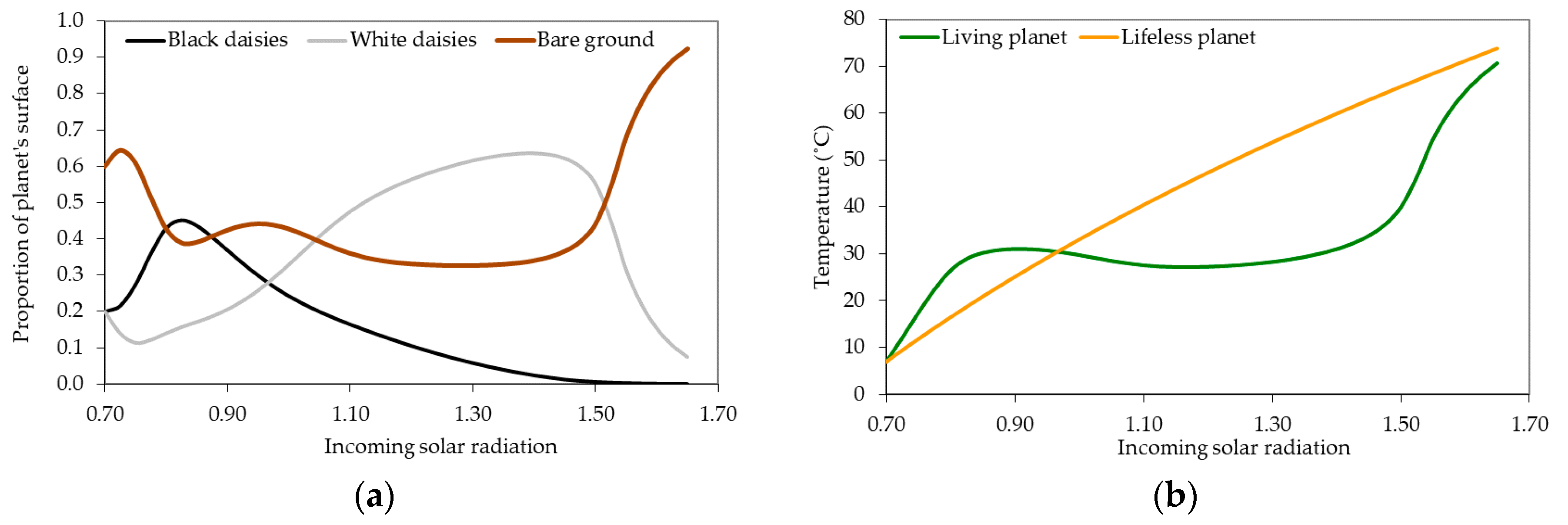
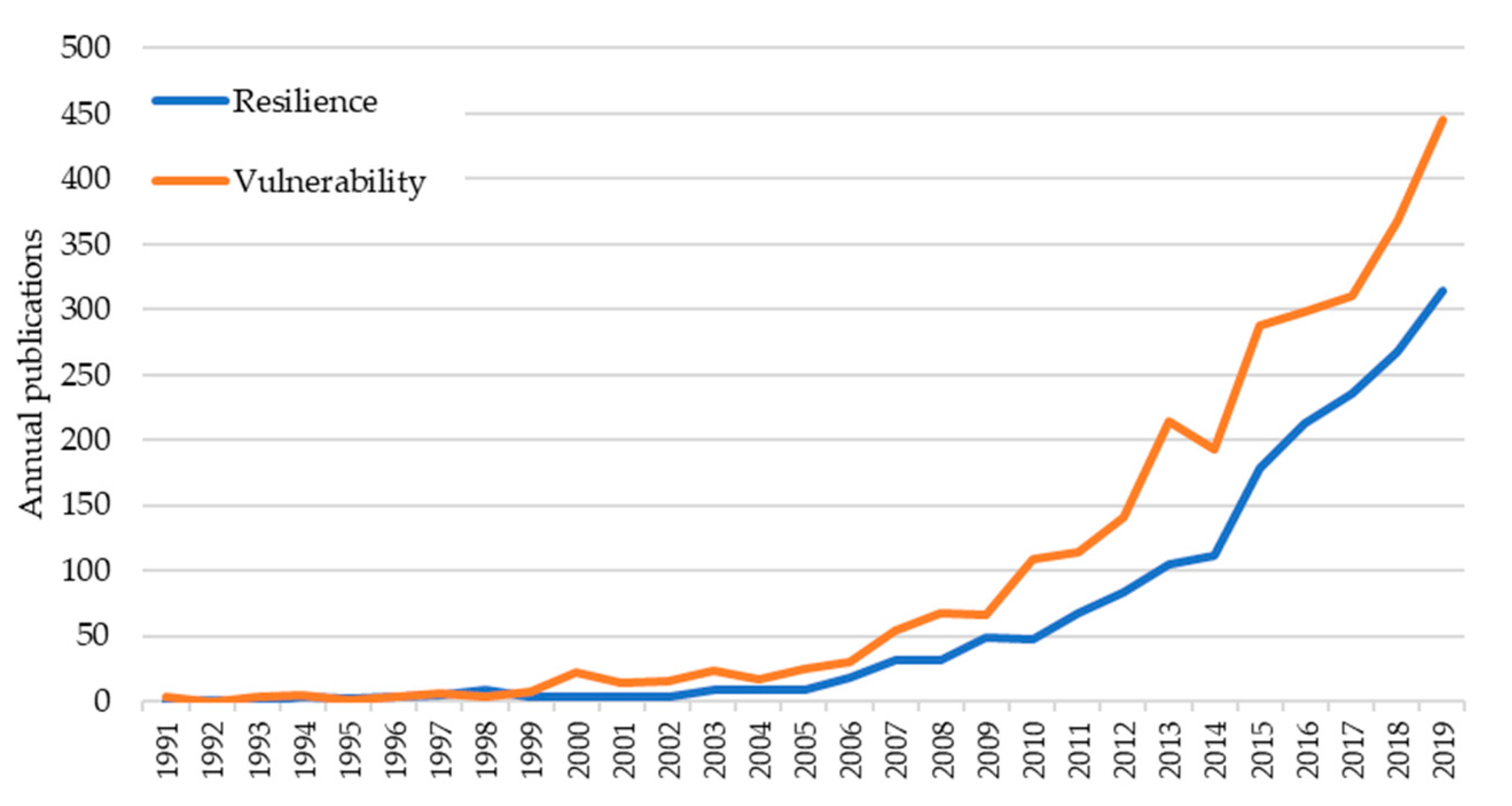
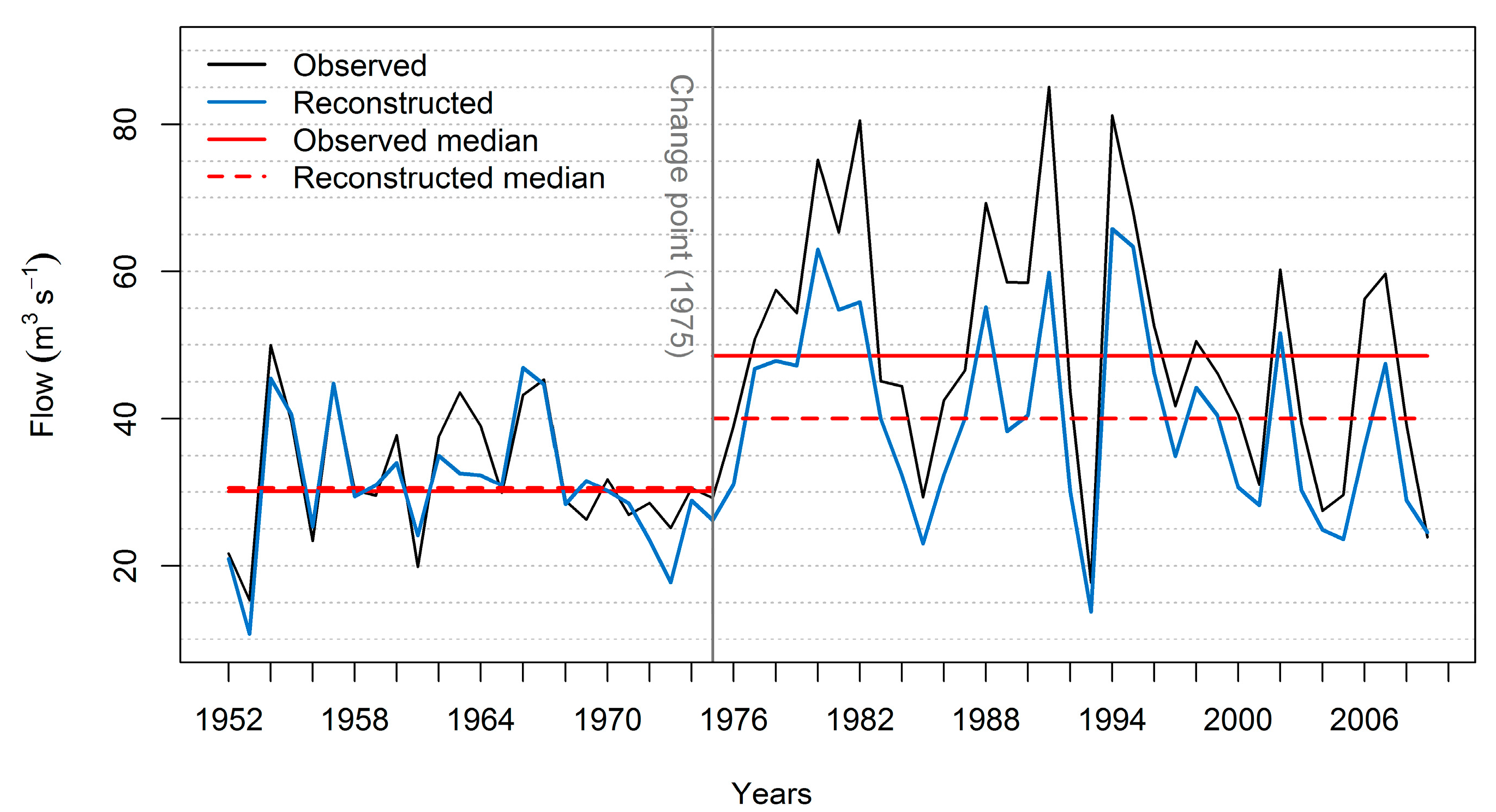

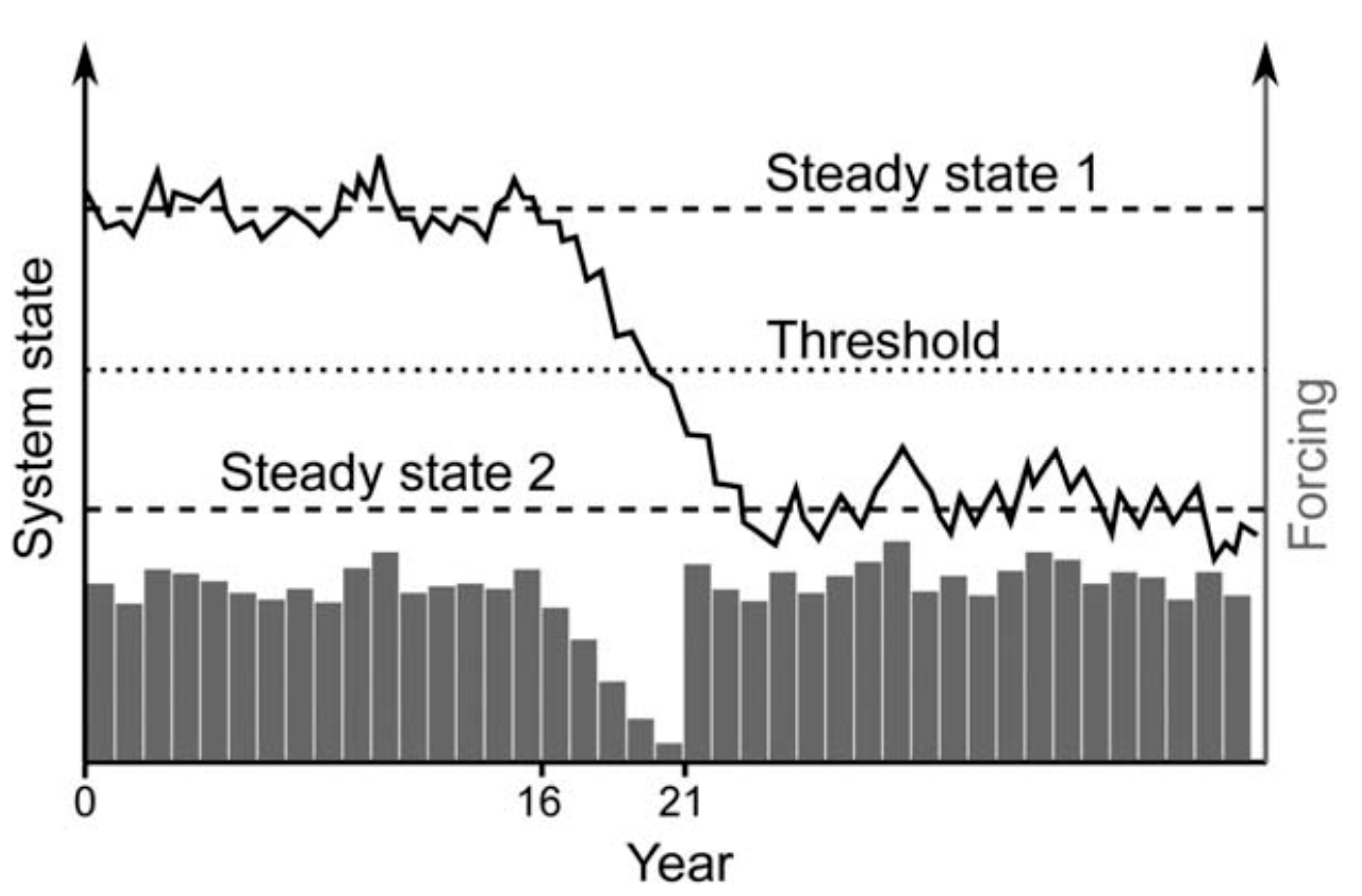
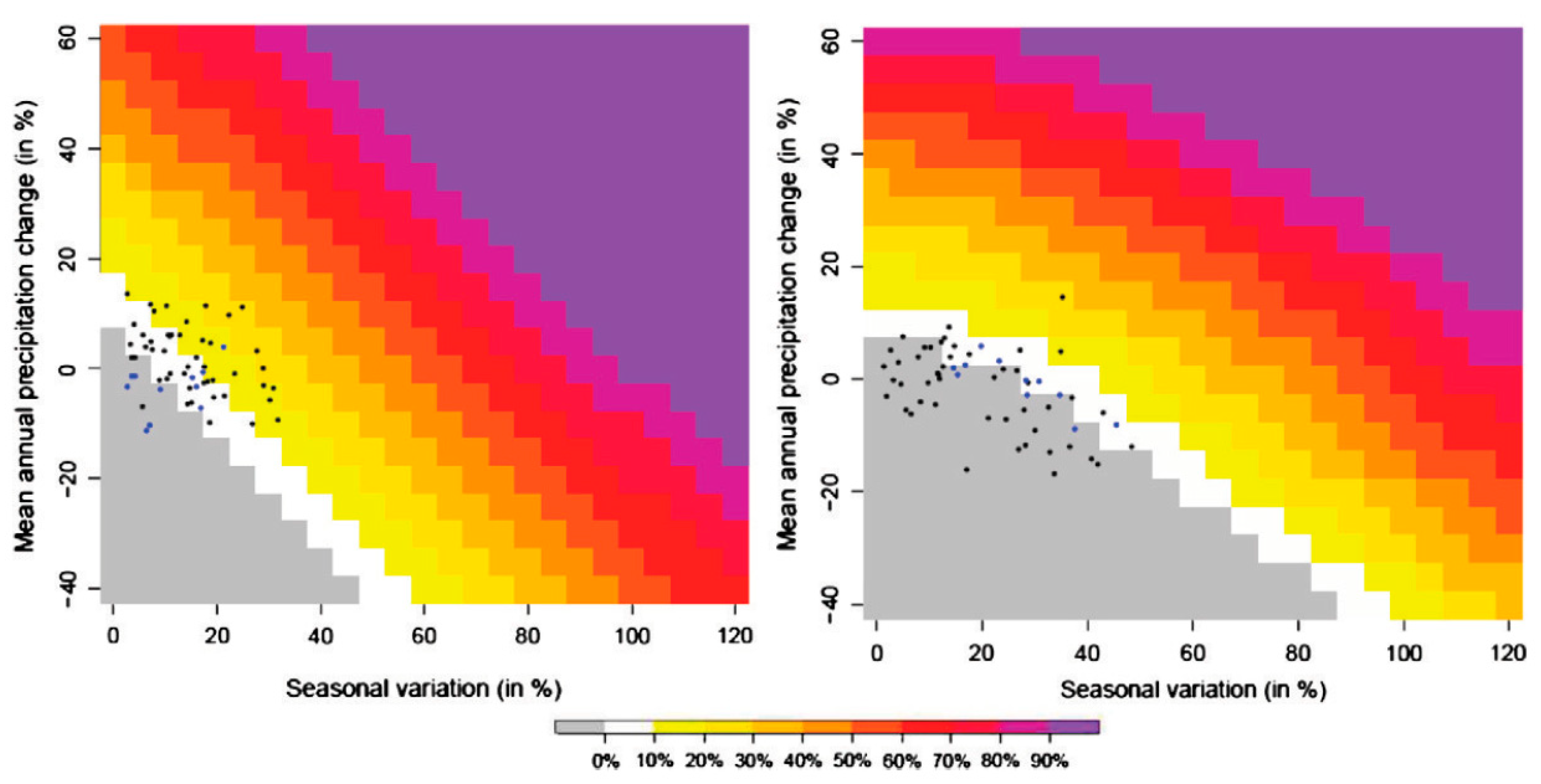
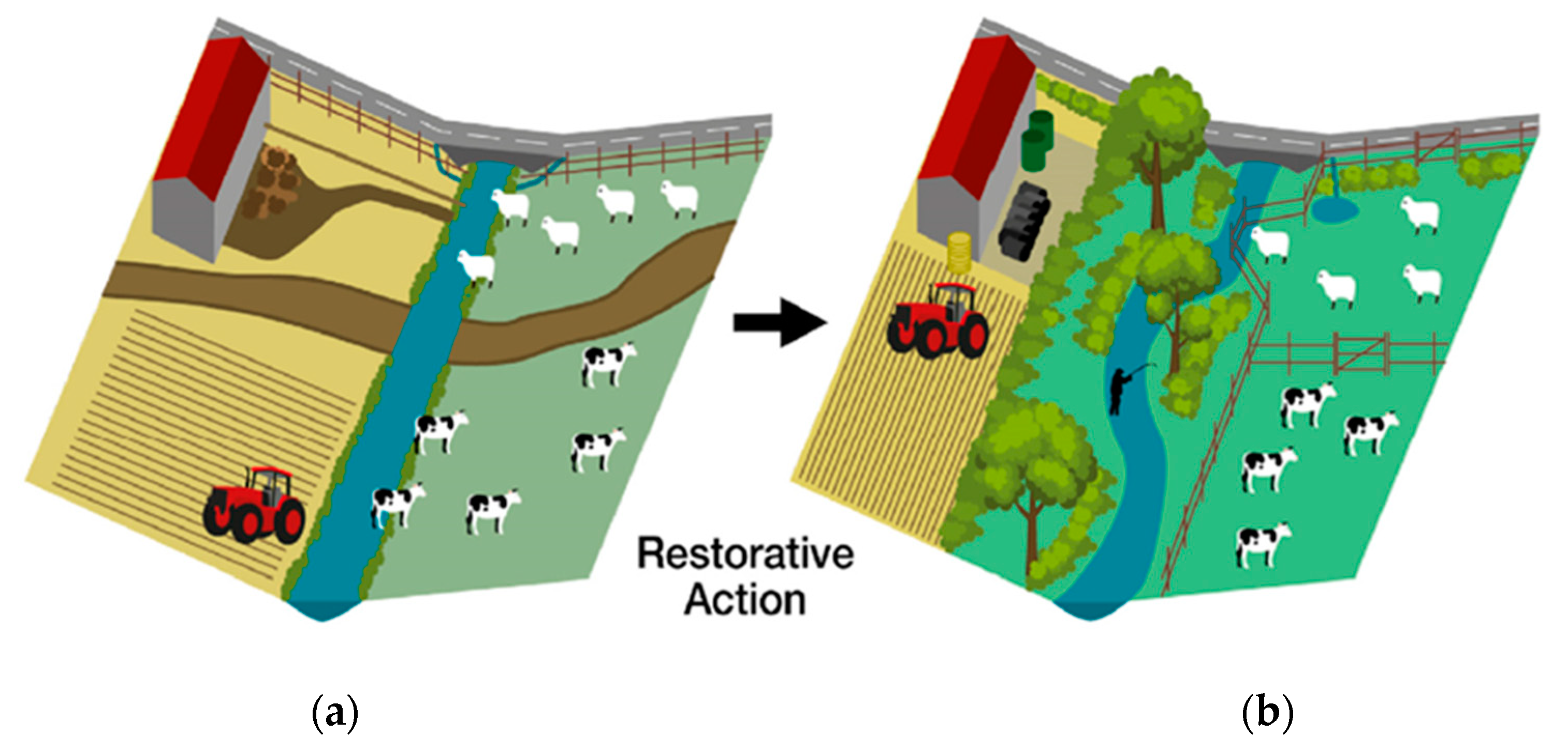
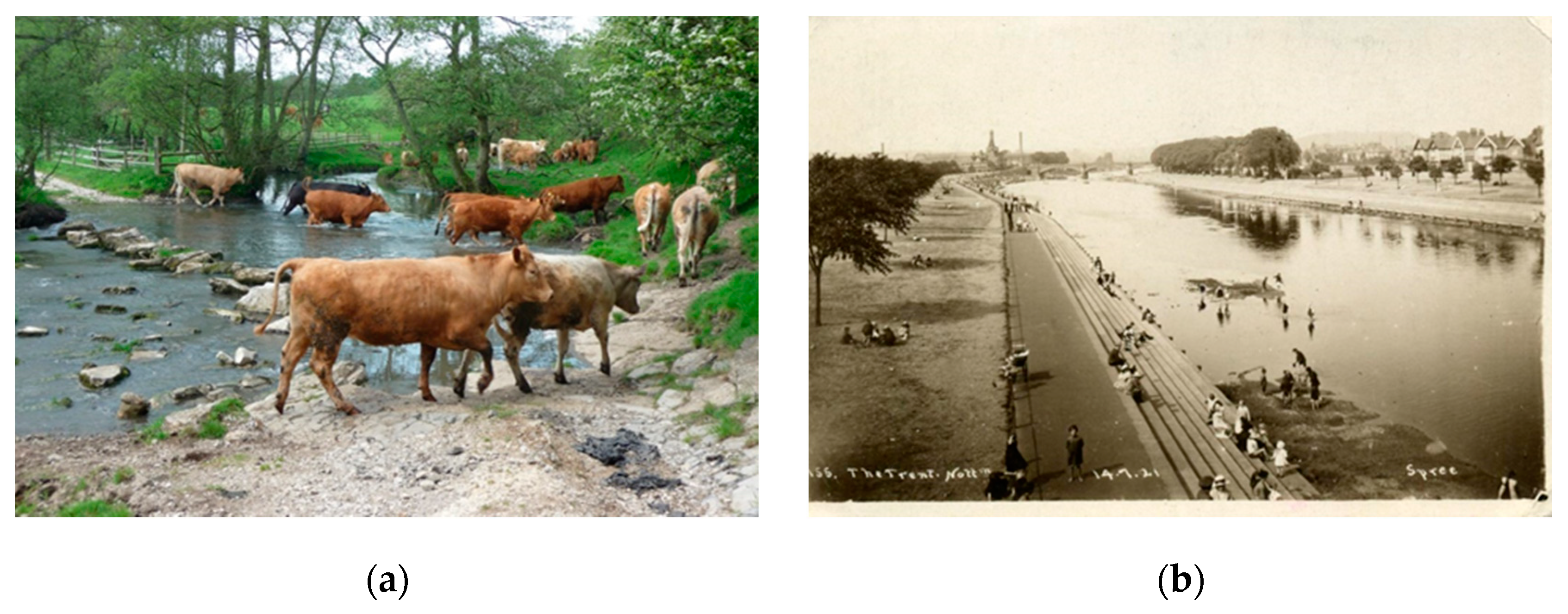
| Climate Risk and Vulnerability Assessment |
|
| Natural Environment and Natural Assets |
|
| Infrastructure |
|
| People and the Built Environment |
|
| Natural Environment |
|
| People and the Built Environment |
|
| Infrastructure |
|
© 2020 by the author. Licensee MDPI, Basel, Switzerland. This article is an open access article distributed under the terms and conditions of the Creative Commons Attribution (CC BY) license (http://creativecommons.org/licenses/by/4.0/).
Share and Cite
Wilby, R.L. Resilience Viewed through the Lens of Climate Change and Water Management. Water 2020, 12, 2510. https://doi.org/10.3390/w12092510
Wilby RL. Resilience Viewed through the Lens of Climate Change and Water Management. Water. 2020; 12(9):2510. https://doi.org/10.3390/w12092510
Chicago/Turabian StyleWilby, Robert L. 2020. "Resilience Viewed through the Lens of Climate Change and Water Management" Water 12, no. 9: 2510. https://doi.org/10.3390/w12092510
APA StyleWilby, R. L. (2020). Resilience Viewed through the Lens of Climate Change and Water Management. Water, 12(9), 2510. https://doi.org/10.3390/w12092510




